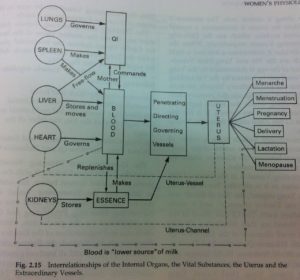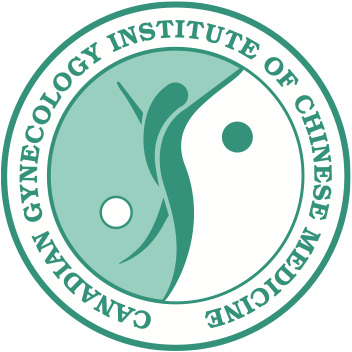Women and their inner workings. In our journey with life, if we pay attention we see the ebb and flow, the coming and going, the ups and downs, the ins and outs, the here and there… the yin and yang of the constant balancing our bodies and minds. The way our bodies work is like watching a Cirque du Soleil performance, with acrobats, jugglers, and contortionists flowing in beautiful harmony and telling the stories of our lives. For women, the most noticeable cycle is monthly. Well, kind of… it is mostly monthly though Chinese Medicine and Western Medicine are slightly different in their definitions of ‘monthly’.
|
Total Cycle Length |
Menstruation Length |
|
| Chinese Medicine |
26-32 Days |
4-6 Days |
| Western Medicine |
21-36 Days |
3-7 Days |
Western and Chinese Medicine agree that average loss of blood is about 30-80 ml (approximately 1-2.5 ounces). The colour of the blood generally starts lighter red, becomes deeper red in the middle and pinkish at the end. There should be no clots. In TCM, the focus is on regularity; even if the cycle stays within 26-32 days but varies in length within this range, the cycle is still considered irregular. Here is a breakdown of the different phases within each cycle:
| Phase | Length | Chinese Medicine | Western Medicine |
| Menstrual | ~ 5 Days | Free-flow of Liver Qi & Blood allows Blood to move down and out. | Menstrual Phase: sharp fall in estrogen and progesterone levels; necrosis of endometrium |
| Post-Menstrual | ~ 7 Days | Blood & Yin are empty, Ren & Du are depleted. | Follicular Phase: follicle grows, estrogen levels rise due to follicle stimulating hormone (FSH) |
| Mid-Cycle | ~ 7 Days | Blood & Yin gradually fill up Ren & Du. | Ovulatory Phase: ovum is released from follicle, corpus luteum develops due to luteinizing hormone (LH) |
| Pre-Menstrual | ~ 7 Days | Yang Qi rises, Liver Qi moves in preparation for menstruation. | Luteal Phase: corpus luteum grows and secretes progesterone. |
Why is this important? When treating women, knowing where they are in their menstrual cycle can help guide treatment, whether their main complaint is gynecologically related or not. For example, nourishing the Blood is best done in the Post-Menstrual time and should be avoided during the Pre-Menstrual time. Tonifying the Liver, Kidneys and Essence is best accomplished during the Mid-Cycle. Treatment targeting the movement of Liver Qi is best done during the Pre-Menstrual phase.
Here is a pictorial representation of the above:
 According to Chinese Medicine, the menstrual cycle is a whole body phenomenon. Here is a summary:
According to Chinese Medicine, the menstrual cycle is a whole body phenomenon. Here is a summary:
- Lungs: govern Qi
- Spleen: makes Qi & Blood
- Liver: in charge of the free flow of Qi while also storing and moving the Blood
- Heart: governs the Blood
- Kidneys: stores the Essence
- Blood: is the mother of Qi – Qi is the commander of Blood; Blood replenishes Essence – Essence makes Blood; Blood is the lower source of milk
- Blood & Essence: control the functioning of the Ren, Du and Chong meridians
- Ren, Du & Chong: influence the uterus
- Uterus: controls menarche, menstruation, pregnancy, delivery, lactation and menopause
- Uterus Vessel: connects the Heart and uterus
- Uterus Channel: connects the Kidneys and uterus
Here is a pictorial view:
 Each organ or Meridian separately can influence menstruation, or it can impact other organs to influence menstruation. Any which way you look at it, it is a fine balance. If you have any questions, please contact us!
Each organ or Meridian separately can influence menstruation, or it can impact other organs to influence menstruation. Any which way you look at it, it is a fine balance. If you have any questions, please contact us!
Caroline Prodoehl, TCMP
Maciocia, Giovanni (1998). Obstetrics & Gynecology in Chinese Medicine. Churchill Livingstone.

